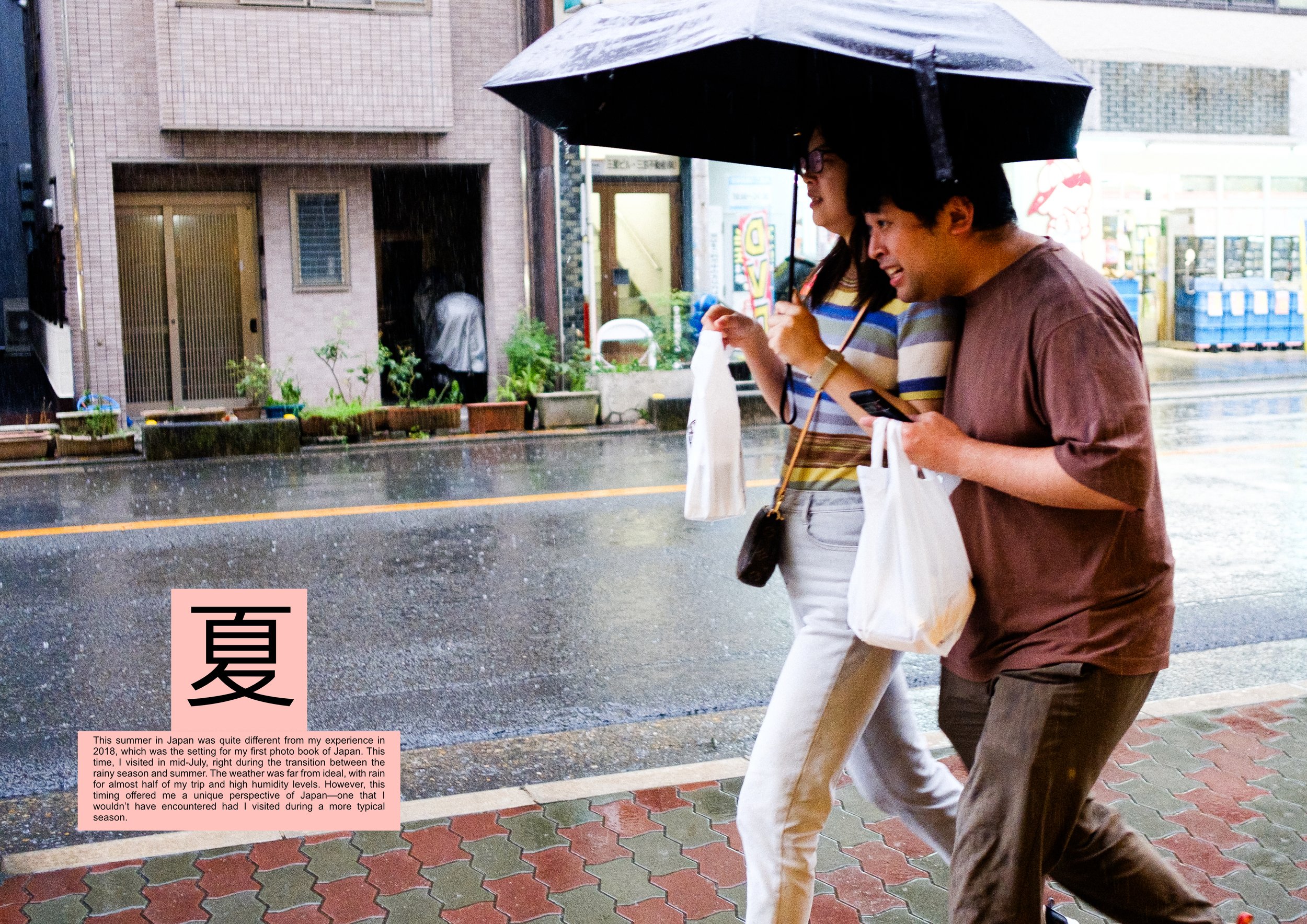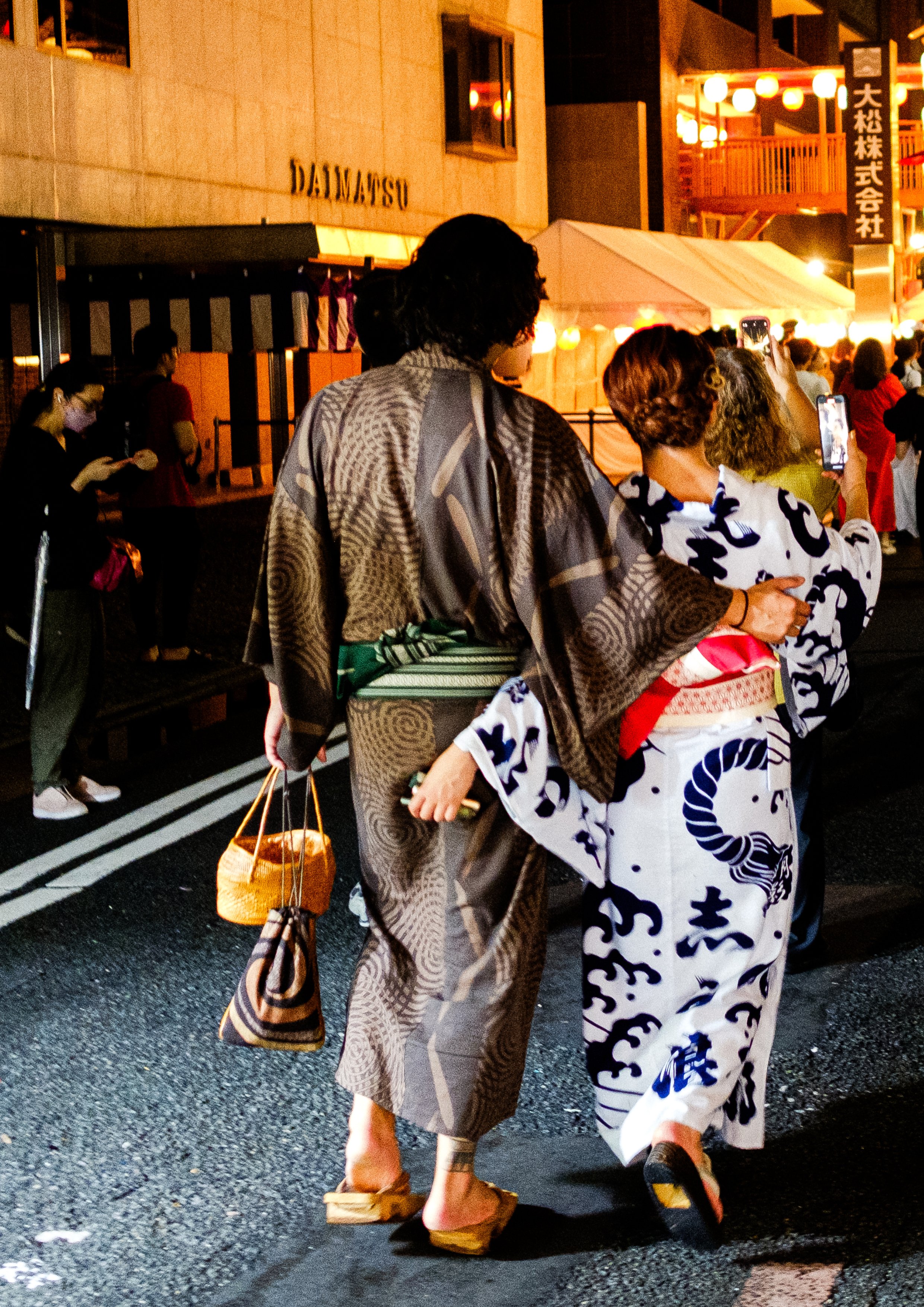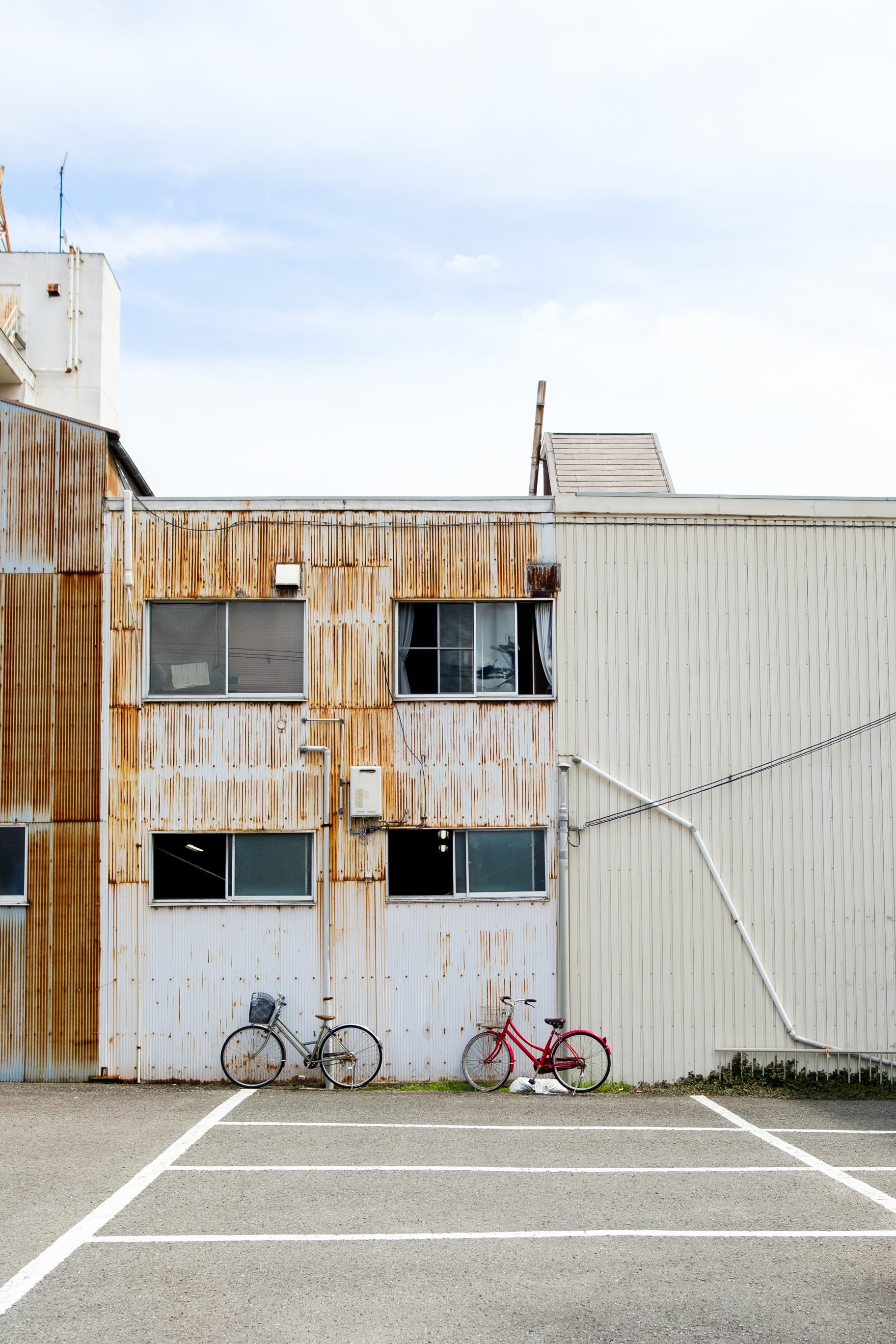Rainy Summer: Embracing Spontaneity and the Beauty of the Mundane
After my second trip to Japan in 2018, which you can read about here, the pandemic hit in less than 24 months. That halted my travel plans. But gladly I did get to go to China in December of 2019 to attend a friend’s wedding right before the global lock down. That was my last trip until 2024.
When 2024 rolled around, global borders were fully opened again. Naturally, I chose Japan. The country has had a special place in my heart since my first visit in 2014. This time I decided beforehand to make a photobook out of the trip.
Anxiety of the Unknown
This decision kind of put me in a pickle. From planning the trip all the way to executing the trip there were frequent moments of anxiety. It was the first time I decided to plan out my trip meticulously. I used the Wanderlog app - which is a great app, just not for me - to plan. The act of researching places to go, researching transportation, restaurants, etc was putting a lot of stress on me and I believe on my creativity. So, I dropped the meticulous planning and just went with a list of touristy places to visit with no strict must visit or when to visit. Leaving myself enough space, time and freedom to go ahead and explore each city.
However, I could still feel that dreaded sense of anxiousness following me as I went around exploring because with a vague list in the back of my mind comes a sense of "I must cross out the items". In the end, I did feel that this line of thinking forced too much rigidity on my itinerary that hurt my desire for exploration and adventure. This is something I would not do again.
Fear of Failure
With the pre-determination of making a photobook for the trip came another negative sensation, fear. The fear of failure to put together a book. It also came with a burden, a burden as described in the previous paragraph, the burden of research which I resent. Researching what to shoot, where to shoot, when to shoot, upcoming events, etc. While researching is a great way to get you started on a project - and I do so on multiple projects in the past with great results - I learnt that for me the book is a byproduct of my travels, I am not traveling to make a book. If I were, there would be no joy in it. So, in the end, I dropped the idea of research and chose to rely on chance encounters to discover and explore. This was a very important realization for me during the trip and helped me loosen up.
Osaka: Heat, Emptiness, and the Beauty of the Mundane
With this sense of anxiousness that stemmed from the mindset of pre-planning and research, and the absence of any major trips the past 4 years I walked the street of Osaka. Ready to explore and capture. Quickly, I felt the overwhelming heat and the emptiness of Japan. If you haven't been to Japan recently, you do be surprised at how empty it is aside from the major tourist attraction spot. This simply did not inspire me, however, after looking back at the photos I took, I came upon yet another interesting realization. The realization that I enjoy recording the mundane scenes. This may contrast with the trend of street photography as of late where you have the most interesting subjects with the most interesting shapes and forms and lights and shadows. I simply do not see like that, not that I cannot train myself to do that if I wished. But I realize I do really enjoy the act of simply capturing the mundaneness of life as it happens. This is what I leaned into on this trip unconsciously and has dictated my way of seeing going forward as well.
However, before any further exploration, let’s stop at my favorite udon stall that fed me my breakfast every day when I was in Osaka. Prepared by a dedicated aunty serving locals free of tourists.
Back to the shots, capturing the mundane is not something you are exposed to much in the current landscape of street photography. I feel like the genre peaked with Fred Herzog, William Eggleston and Henri Cartier-Bresson and their style of capturing the banality of life (not that I am comparing the quality of my output to theirs). However, that is not to say that these are not valuable photographs, in fact, these are the kind of photographs so missing from the landscape that a sprinkle of these will help to preserve the time as we live now and act as a document to reference the current life in the future.
Hiroshima: Calm and Clarity
Moving on from Osaka, I found myself in Hiroshima where things are rather quiet, serene and calm. Its here that I got to stay in a traditional style Japanese home for the first time in my life in the countryside with a stream of water from a nearby waterfall right next to my lodging. Here, I did start to relax more and enjoyed the nature and the history of Hiroshima.
I had made it a point to visit Miyajima Island, not far from Hiroshima, to see the Itsukushima Shrine. The inspiration to visit this place came from the book The Forms of Japan by Michael Kenna and Yvonne Meyer-Lohr, where the photographers traveled across Japan through multiple seasons, photographing its landscape like a surrealist painting. A truly inspirational photography book. At this point in my trip, I felt a sense of accomplishment just being there and seeing the Torii gate, something I had wanted to do since 2014. Surprisingly, this was not for the photobook I had planned to create, but because it is one of those personal wonders that one would want to see for themselves.
Kyoto: Festivals, Forests, and Filmic Garden
From there, I found myself in Kyoto, the ancient capital of Japan. Kyoto is where I wished I had spent more time, but at the same time, I was there during the best part of the summer. While there, I chanced upon the Gion Matsuri, a summer festival of purification and ridding the city of disease-causing entities. The Yasaka Shrine, a major shrine in the Gion district and Kyoto, holds the procession of the ceremony.
On the second day, I was lucky enough to follow a group of devotees of the ceremony along their march from home to home, providing blessings until they reached the shrine, where the ceremony continued before multiple palanquins marched out of the shrine in different directions and circled the district as a spiritual opening of the path for the celebration to take place. Traditionally, inside the palanquin sits a purified child. A child in Shinto symbolizes purity, an untainted Kami. Many children participate in the ceremony, performing various volunteer tasks as a means of passing on the tradition through generations.
While in Kyoto, it is also hard to miss the bamboo forest expedition. What caught my attention the most was not the bamboo forest itself (or rather bamboo garden), but the garden inside the estate of a famous Japanese director whose name has evaded me, situated at the end of the bamboo forest walkway. It was one of the prettiest gardens I have ever set foot in. It was clear that the person(s) who designed the entire ground of the garden had in mind to make this a location fitting of becoming a movie scene.
Koyasan: Sacred Stillness and Modern Realities
Upping the religiosity scale of Kyoto sacred festival to a temple settlement tucked in amongst century old cypress tree is the town of Koyasan, inside the sacred Mount Koya where upon a unique sect of Buddhism was founded called Shingon Buddhism. Here, travelers can lodge in temples dotted around the small settlement. What at first felt like would be a good opportunity to unwind and bath in the calmness of the serenity of a temple quickly became obvious that these temples were for profit organizations and not for pilgrims to lodge on their way to enlightenment anymore. However, I don't think we can fault the temples for adapting to the times. In fact, what else could they do other than adapt? Risk running out of funds to keep the temple and its monks afloat? In any case, spending a few nights here away from the bustling of the city did bring upon peace to me and many visitors, nonetheless. If I could do it again, I would spend a few more nights there and explore the surrounding mountains for there are multiple temples and shrines hidden within.
Wakayama City: A Gentle Surprise
Descending the mountain of Koyasan landed me in Wakayama city. This city surprised me the most with its tranquil quality and friendly locals. By this time, my anxiety and fear of failure had slipped away, opening me up more to connect and explore. I stayed at a local guest house where I met fellow travelers and conversed with locals who had some proficiency in English. Engaging with other souls here also cemented what I have known to be true for a long time and defined my travels: connections. Surprisingly, I met a recently published author, Gary Stevenson, with whom I had a pleasant conversation about life in general. To add to that surprise, the bartender on duty was a devotee of Shingon Buddhism and frequently visited Koyasan in her younger years. However, like me, her family and she have left that life behind, as the temples there seem to have morphed into more of a business establishment than a temple.
Wakayama city is a seaside city where a quick ride would get you to the beach in no time. The complete change of scenery and color tone of Wakayama gave me an idea to separate this photobook by colors for different sections during my editing process. We start off with the somber tones of cities, moving on to the red dominant colors of the shrines, followed by night photos and the white celebration of Gion Matsuri and the greeneries of Kyoto, ending with the relaxing blue of Wakayama.
In the End
Overplanning was my biggest enemy on this trip — but it taught me something important. Research and structure can be helpful, but only if they align with your personality and your creative process. For me, too much planning dulled my curiosity. I’ve learned to leave more room for spontaneity.
I also discovered that I’m drawn to the quiet things: the ordinary, the overlooked, the mundane moments that make up real life. These are the things I want to preserve with my camera.










📸 Want the full copy? Fill out the form below to request one!



























